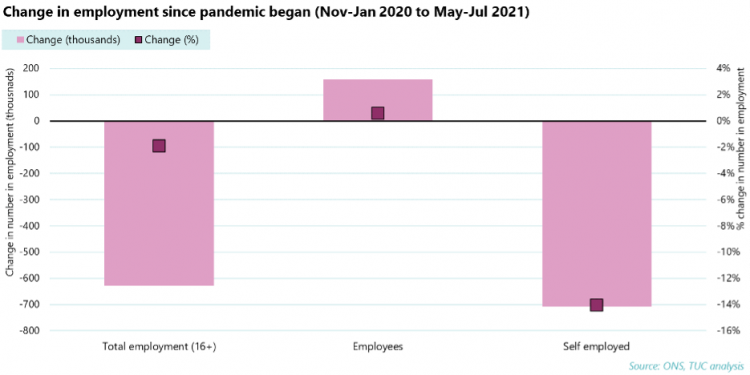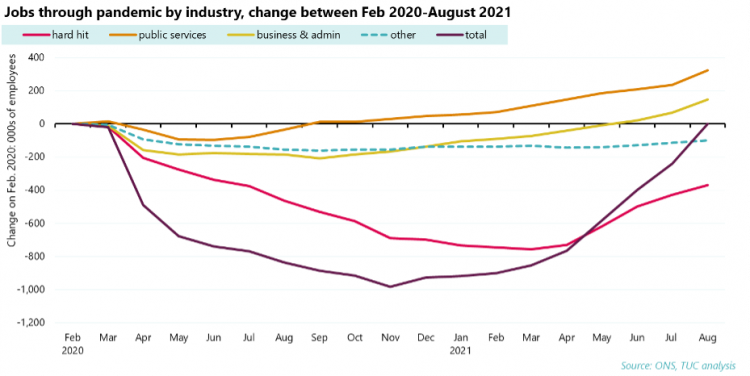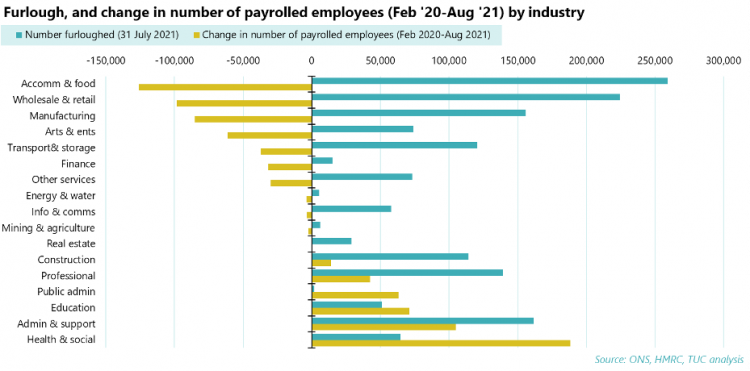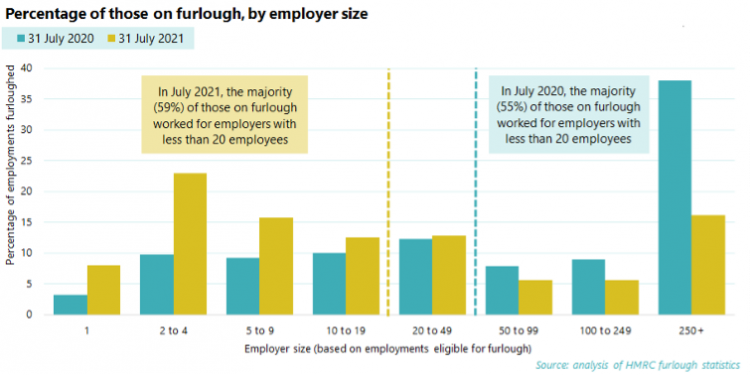Now is not the time to get complacent about jobs
Payroll data for August shows the number of employees returning to pre-pandemic levels, with the Labour Force Survey showing the same. Vacancies are at a record high, topping one million for the first time on record. And the unemployment rate has dropped slightly, from 4.8 per cent in Feb-Apr 2021 to 4.6 per cent in May-Jul 2021 and the recent peak of 5.2 per cent at the end of 2020.
It’s the positive messages that are being picked up in the coverage around the statistics, with headlines focusing on record job vacancies and recovery in employee numbers. But we shouldn’t shy away from some of the concerning elements in today’s stats.
Numbers in employment
Firstly, while the number of employees may have returned to pre-pandemic levels, the number in employment hasn’t. The number of people in employment remains 628,000 below where it was before the pandemic hit. These figures differ because the number in employment includes those who are self-employed, rather than just employees.

Hard-hit industries still struggling
The second concern is that even if we look at just employees, the industry breakdown shows a more mixed story.
The total number of payrolled employees began to recover at the end of last year (when the number of employees was down by almost a million), but this was largely driven by a small group of industries. In part, this was those critical to the response to the pandemic (health especially).
The fuller recovery began in spring this year. Employment in hard-hit industries (manufacturing, wholesale and retail, accommodation and food, and arts and entertainment) had continued to deteriorate through to March 2021 (by 750,000 in total) and only began to pick up from April.
This recovery has continued through to August, but jobs in hard-hit industries are still down by 370,000 on pre pandemic level. In contrast public services and business and admin are up 470,000.

Furlough
And any positive news must be viewed in the context of furlough. The number of furloughed employees is falling, but the fall is starting to slow, and 1.6 million jobs remained furloughed at the end of July.
Given that the scheme ends this month, this is a concerningly high number. And those hard-hit industries that have already seen the biggest hit to employee numbers also have high numbers of employees furloughed. Furloughed employees are still considered employees and therefore count towards the number of payrolled employees.

Some are optimistic that the end of furlough won’t see many job losses because we aren't seeing the number of redundancy notifications we'd usually see with upcoming high job losses.
But this may be overly optimistic. Employers only have to report planned redundancies if they’re proposing to make 20 or more employees redundant within a period of 90 days or less. This means that smaller employers aren’t required to report planned redundancies. While last summer, the majority of furloughed employees worked for big employers, this has changed drastically since. Furlough is now concentrated among small employers.

A precarious recovery
Furlough, while not perfect, has undoubtedly done its intended job. We haven’t seen the levels of unemployment we would have without it. 11.6 million jobs have been furloughed at some point of the pandemic, many of these might have been lost without the scheme.
This important scheme will come to an end this month, with up to 1.6 million jobs at risk. It seems optimistic to get overly excited about a recovering labour market before we see the impact this has.
It’s also not the time to use this excitement to justify complacency. The end of furlough comes at the same time as the planned cut to Universal Credit, which will slash the income of millions of working households.
Instead, it’s time for action.
In the short term, the government must extend the furlough scheme for as long as its needed, and put in place a permanent short-time working scheme to protect workers at times of economic change. The planned £20 cut to Universal Credit must also be cancelled. Rather than cutting Universal Credit, the government should be overhauling the benefits system to make it much better. Government must also ramp up investment in jobs, introducing an £85 billion green recovery package to create 1.24 million green jobs.
While today’s labour market stats have some positive signs, we shouldn’t ignore the warning signs. Jobs are at risk due to the end of furlough, and livelihoods are at risk due to the planned cuts to an already meagre social safety net.
Stay Updated
Want to hear about our latest news and blogs?
Sign up now to get it straight to your inbox
